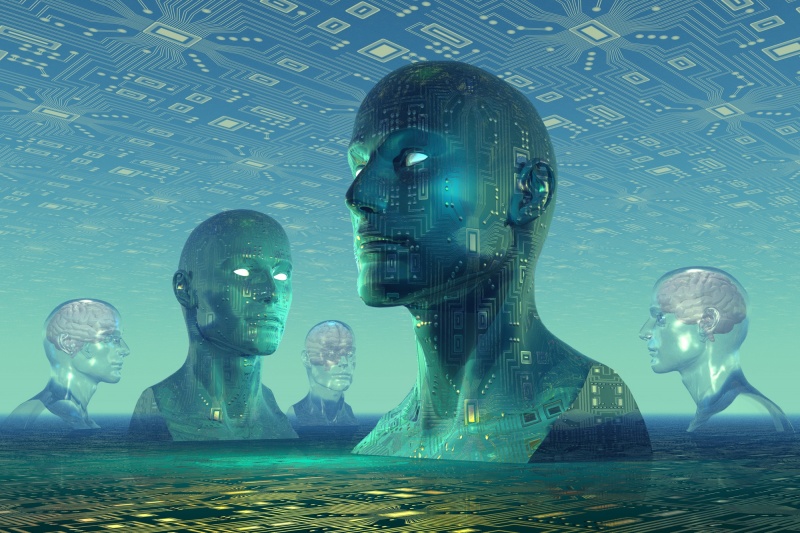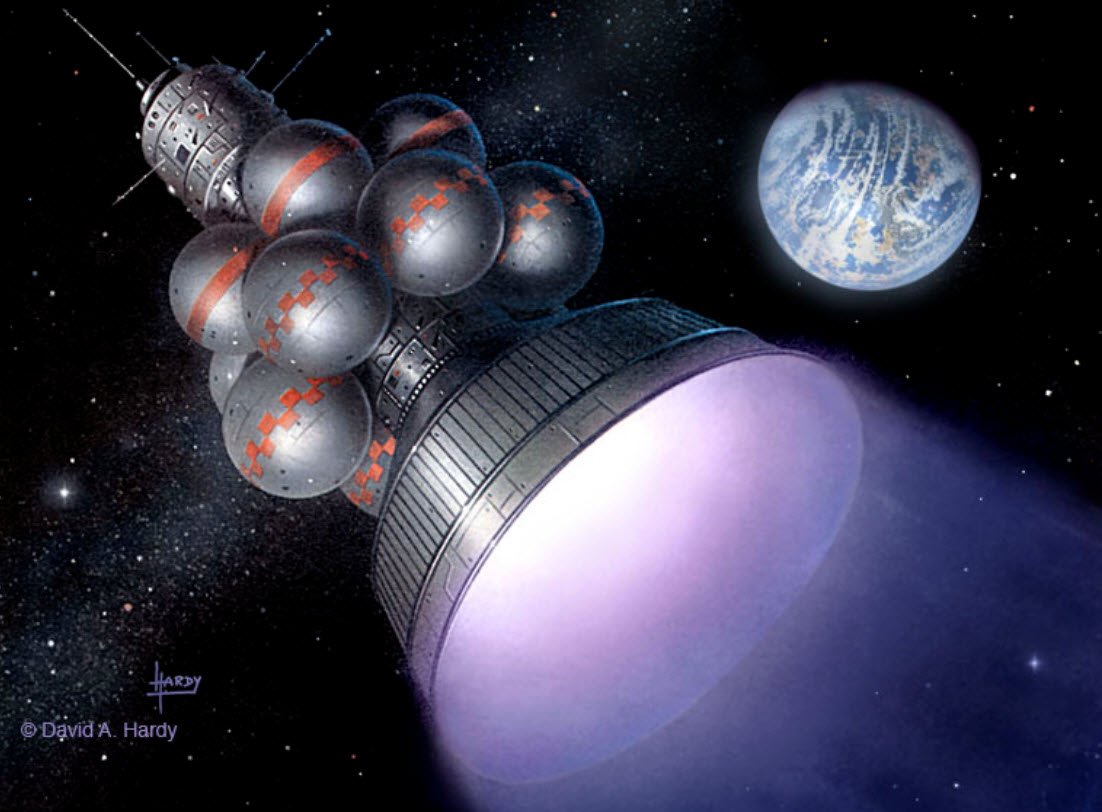 |
| Human Sapienome Project, complement to the 100YSS (credit: Photo Wall) |
Dr. Martine Rothblatt suggests inviting the entire world’s population on-board the 100YSS by uploading, at no cost, their mindfiles — a 1 TB (or less) digital file of an individual’s mannerisms, personality, recollections, feelings, beliefs, attitudes and values — into a central database that will be carried onboard the starship. Presented at the 100 Year Starship (100YSS) 2012 Public Symposium Sept. 13–16, 2012 in Houston.
 |
| Daedalus starship (credit: David Hardy) |
In 1985 We Are the World, the first-ever multi-platinum single, got tens of millions of people singing “There is a choice we’re making; we’re saving our own lives.” [1]. These words may never apply to a project more meaningfully than to the 100 Year Starship (100YSS), intended to “make the capability of human travel beyond our solar system to another star a reality over the next 100 years.”.
Digital size of a person
Research from several groups show that a digital file of a person’s mannerisms, personality, recollections, feelings, beliefs, attitudes and values can be represented by less than one terabyte (1TB) of structured information [2] [3] [4] [5]. This is because a limited number, n, of human universals, m, yield millions of unique human combinations via (n!)/(m!*(n-m)!).
Add to this a few gigabytes of unique memories and you can account for the billions of diverse human mindsets, notwithstanding a very modest toolkit of building block characteristics.
For example, a megabyte of information about one’s daily experiences amounts to under 20 GB of information in 50 years. That daily megabyte is adequate to handle all of one’s tweets, texts and emails plus some compressed photos, audio and video. Combined with structured answers to personality inventories [5] and socio-cultural contextual information, a TB is ample space to provide a comprehensive digital reflection of your consciousness, known as a “mindfile.” The vast majority of information we store is redundant.
Websites exist that collect video streaming of an individual’s daily interactions. While such video streams can rapidly exceed many terabytes in volume, they far exceed the amount of information needed to accurately reflect a person’s mannerisms, personality, recollections, feelings, beliefs, attitudes and values. Advanced versions of pattern recognition software will be able to abstract from such continuous digital records such information as uniquely contributes to a mindfile. These pattern recognition based-abstracts are unlikely to require more than a TB of storage, especially when intelligently structured.
Digital size of all human mindfiles — the “Human Sapienome”
Digital memory of approximately 1022 bytes, the size of all human mindfiles in aggregate, what should be called the human “sapienome,” will be available within 20 years at less than 1% of the likely weight and cost of the 100 YSS. Ten billion people, times one trillion bytes, yields 1022 bytes.
The Project Daedelus starship, either in its original British Interplanetary Society version or in subsequent self-replicating conceptualizations, had a payload mass of on the order of 500 tons [6]. Orion Starship designs of Freeman Dyson had estimated costs ranging from a tenth 10% to 100% of 1968 US GNP [7].
The past five decades of relatively steady, 18-month doubling rates in constant cost for digital memory is not expected to change over the coming decades, due to economic demand, competition and the availability of three-dimensional traditional and novel computing substrates [8].
Hence, by exponential growth, today’s terabyte of memory will become a giga-terabyte of memory in 45 years. Ten such memory modules would hold a ten billion person human sapienome at that time. Alternatively, a few thousand mega-terabyte modules could contain the human sapienome about 30 years from now.
A terabyte today costs around $100 and weighs about 0.5 kg. These numbers are not significantly different from lesser amounts of memory in years past, and are considered by Ray Kurzweil to remain constant or shrink with exponential growth [8]. Hence, 45 years from now, the mass and cost of the human sapienome on a 100YSS would be insignificant. Even 30 years from now, the mass would be a few thousand pounds and the cost about $1 million. This represents less than 1% of the mass and cost of the starship.
Universal access to information technology needed to create a mindfile is at hand. Already three-fourths of the world’s population has a mobile phone, about one-fourth of which are smartphones capable of full mindfile creation capabilities.
Specialized websites to create mindfiles, such as LifeNaut.com and CyBeRev.org, as well as more generic websites that can also be used to create mindfiles, such as Google+ and Facebook, are free to the public.
Virtually every human being will be able to freely create a mindfile, as smartphone ownership becomes all-but universal over the next decade (with shared access to one for individuals in deep poverty). Hence, there are neither economic nor technological barriers to the creation of a human sapienome.
Activation of mindfiles with consciousness operating system software, or “mindware”
It may well be feasible to activate the individual mindfiles within the sapienome with consciousness operating system software, known as “mindware.” This would enable all participating members of the human race to be digitally present, via software agent extensions of themselves, and interfaced with sensors upon arrival at the 100 YSS destination.
However, even if such mindware activation is not possible, the entire human race can still be conceptually — and in a sense spiritually and philosophically — “present” at the interstellar destination by virtue of their mindfiles being present onboard the starship.
As noted above, dozens (n) of mannerism, personality and feeling types (m) yield many thousands of unique human combinations via (n!)/(m!*(n-m)!).
Once you add to these thousands of personality and worldview templates differential recollections, beliefs, attitudes and values (within the terabyte of mindfile information), there are many billions of unique possible combinations of human psyches, one of which will be a best-match for digitally stored mindfiles of each 100YSS participating biological person.
Mindware best fits one of the “m” compound mannerisms, personality and feeling types to that analyzed from stored mindfiles, and then populates it with the recollections, beliefs, attitudes and values evident from that stored mindfile. These combinations and correlations can be accomplished with software that needs be nowhere near the complexity of synaptic connectivity of the human brain, and yet still appears as true to the original person as to persuade others, and their digital self, that the same personal identity is present, albeit via a digital extension.
In the last century people became accustomed to the notion that electro-acoustic waves via telephony represented a biological original person. In the coming century, an analogous association is likely with digital simulacra of unique conscious minds.
Keep reading on kurzweilai >>
No hay comentarios:
Publicar un comentario